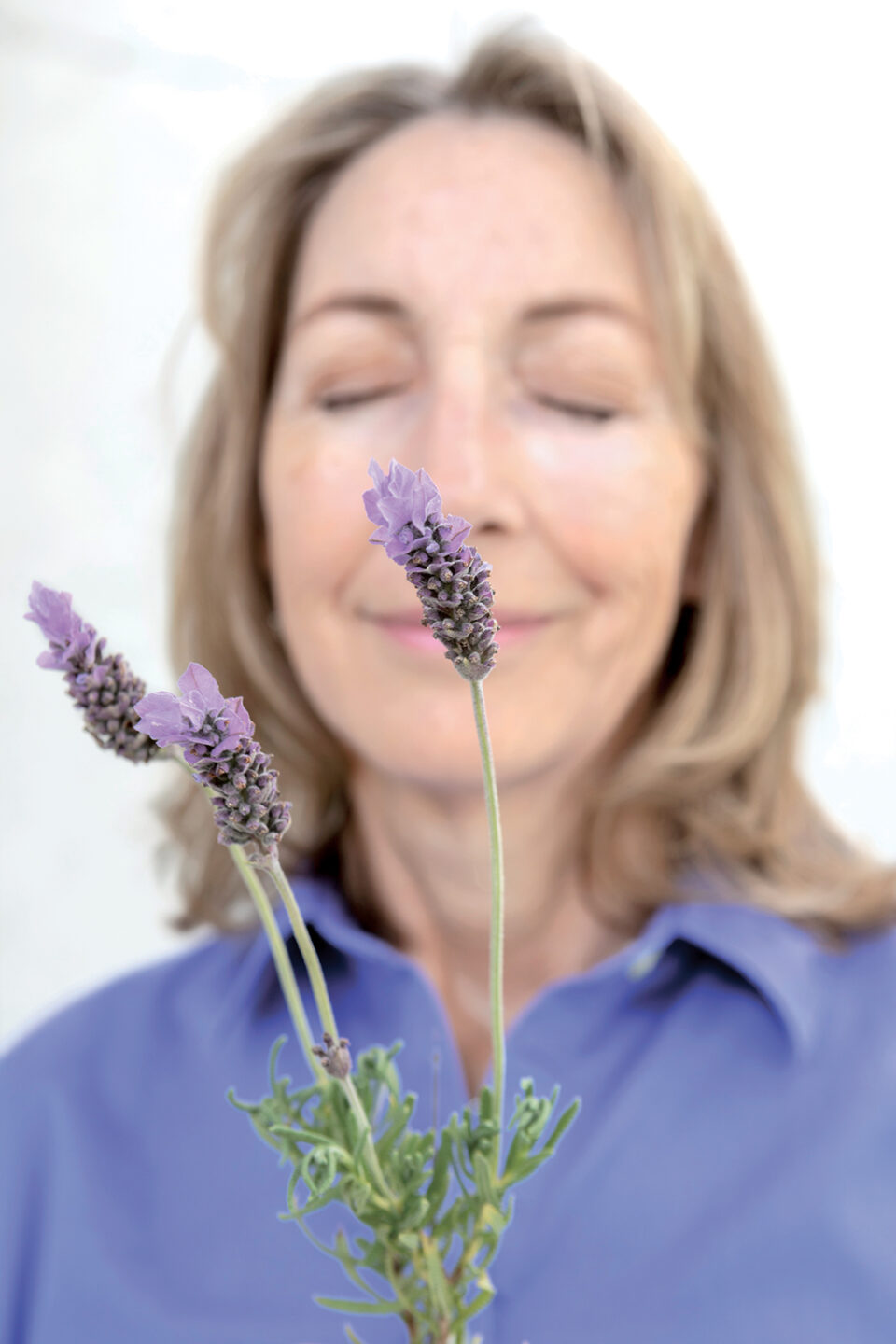Investigating the neural mechanisms underlying the brain’s recognition and interpretation of odors with Scripps Research neuroscientist Lisa Stowers, PhD
Ever wrinkled your nose at a garbage can or leaned into a fragrant blossom? Odors, even imperceptible ones, regularly influence our behavior. Neuroscientist Lisa Stowers investigates the neural mechanisms underlying our brain’s recognition and interpretation of odors, with some surprising discoveries, including the fact that female mice cannot smell male pheromones when it is not time to mate, becoming virtually “blind” to the males’ presence. Recently, she and her lab received an NIH grant to describe a complete neural circuit in a mammalian brain—a first for science.

What drew you to neuroscience as an academic field?
I took a nontraditional path, initially pursuing cancer research as a graduate student, where I identified signaling cascades in cells. But so much was already known in these areas; I needed the “big black box,” something with lots of questions. So, as a postdoc, I turned to neuroscience. Maybe I’ve been primed for this field since childhood. I had a very influential grandmother, a postal worker and early feminist, who always challenged me to think big. She encouraged me to be a lawyer or a doctor, even suggesting I should become a neurosurgeon because that was one of the most difficult medical specialties to pursue.
After earning your doctorate in molecular and cellular biology from Harvard, did you come straight to Scripps Research?
Actually, no. Upon completing my postdoc, I found myself rather burned out and considered doing something completely different from science. I applied to become a florist because of the creative aspect but couldn’t get hired because I had no experience! My postdoc advisor in Boston continued to encourage me and I ended up interviewing for a biochemistry position at GNF (The Genomics Institute of the Novartis Research Foundation), where they said I sounded like a research scientist and recommended Scripps Research. This was the luckiest series of events because I love working here. There’s little bureaucracy and I have plenty of opportunity to explore big questions.

Favorite outside-the-lab pursuits?
I enjoy running, road biking and swimming, and I swim in La Jolla Cove with department members. My husband, daughter and I go on family hikes, most recently to Mt. Rainier in Washington. We ski in winter. But I have trouble turning off my mind. I’m constantly thinking about science and all its questions.
Since you study smells, are you more aware of odors or your reaction to them in daily life?
Yes, I do notice odors and think about how they affect our behavior. I’m aware that some stores have a signature scent designed to motivate shoppers, although there’s not a lot of science behind that. Because my husband has odor-triggered migraines, we keep a low odor profile at home. So, when I’m out, I put my nose in everything.

Decoding behavior: How a smell sparks action
Neurons don’t act alone. Rather, they’re organized into interconnected circuits that carry out specific functions when activated. In certain parts of our brain—especially in the complex limbic system, which controls our emotions and drives—these circuits ultimately shape our behavior.
With support from the National Institutes of Health’s BRAIN Initiative, Stowers is documenting the intricate logic of a social behavior circuit. As with many of the brain’s more complicated functions, research models of circuits for social behavior have never been created. Using experiments involving mice and pheromones, she’s creating the first.
Stowers likens the project to understanding computer software: Studying individual lines of coding can only reveal the range of possible capabilities; true understanding occurs when the entire code, in a specific order, is investigated and manipulated. For Stowers, this means she’ll be looking at the neural coding in its entirety, across brain regions, from beginning to end.
The resulting knowledge will hold unquestionable value for the neuroscience community and fuel additional discovery that will benefit human health, much like the first genome sequence did.